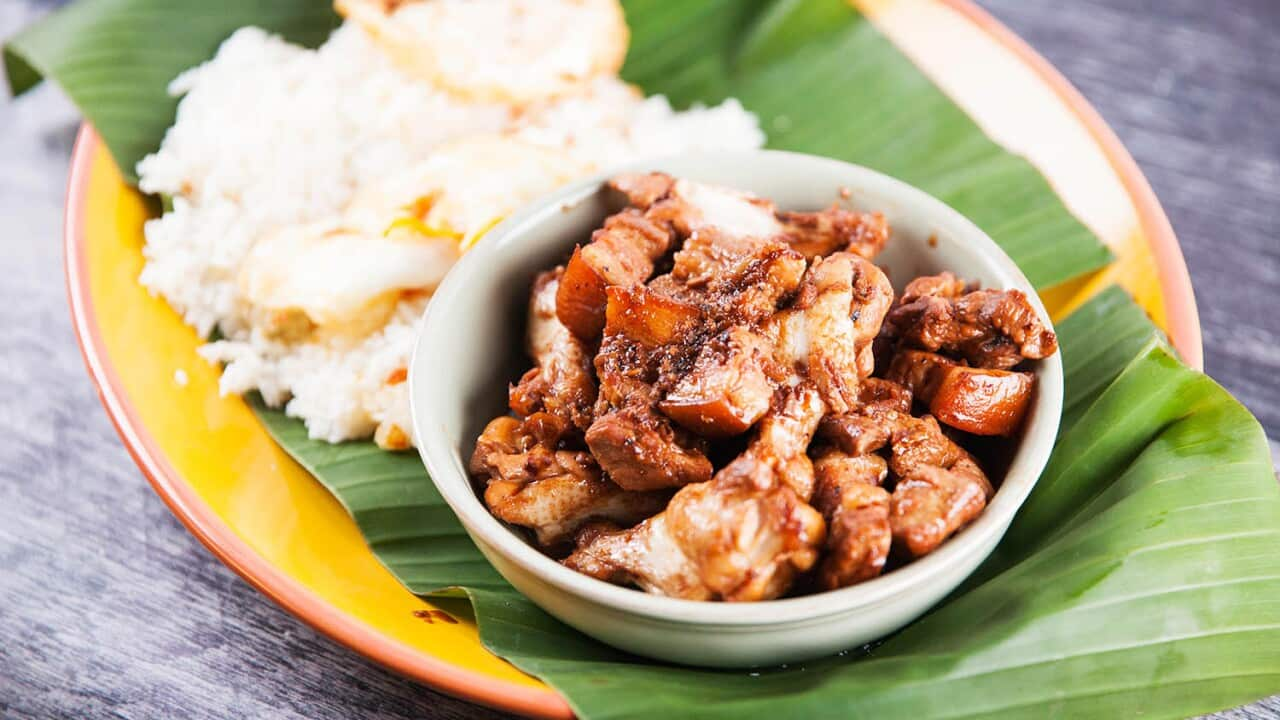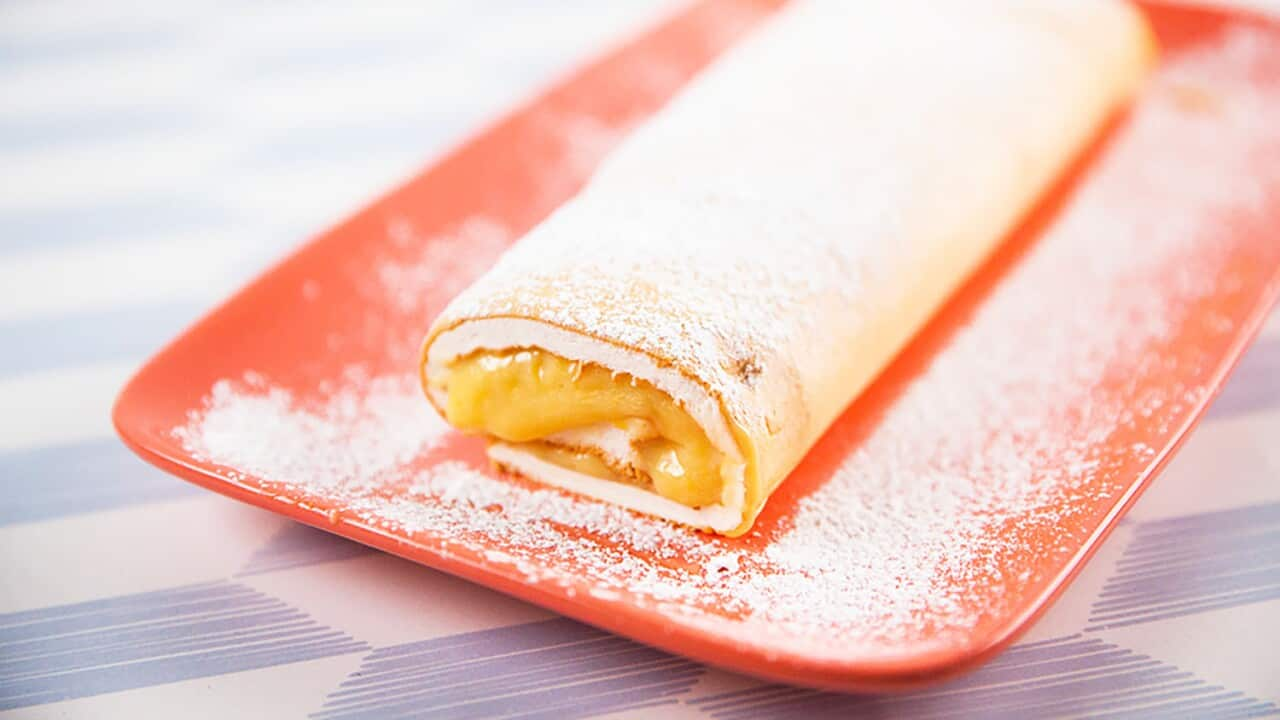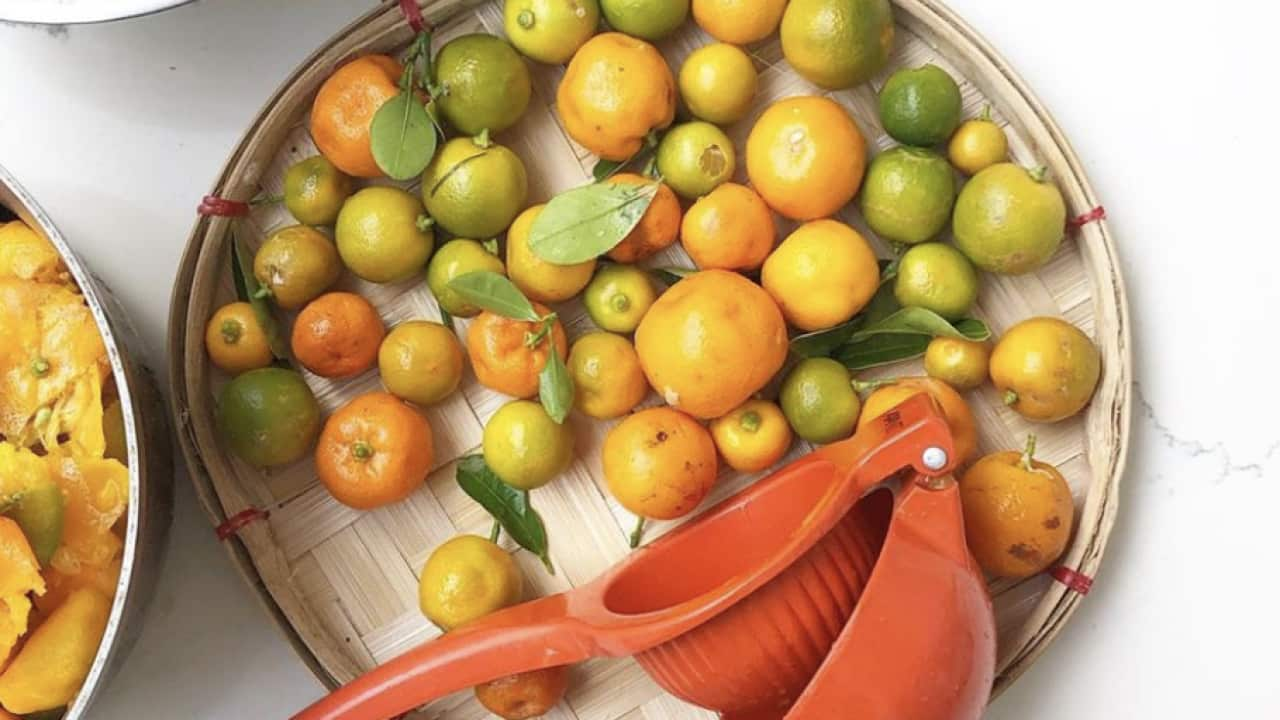--- airs weeknights on SBS Food at 7.00pm. Will Mahusay's Rice episode is ---
Will Mahusay credits champorado as the dish that developed his sweet tooth.
“When I was a kid and we smelled that strong aroma of fresh chocolate, it could only mean one thing: we were in for a treat,” says the owner of , a Filipino restaurant in the inner-west suburb of Newtown.
Champorado is a rice porridge typically eaten for breakfast, or as a snack. It’s slightly soupier than congee, and it’s flavoured with tablea (pronounced tabli-ya): unrefined, raw chocolate pressed into round tablets. For sweetness, brown sugar is added, and the dish is finished with evaporated milk.
“My family usually made it out of leftover rice that had been sitting in the fridge. To reheat that, the quality won’t be as good, so rather than throw it away, my parents would make it into champorado,” he says.
Although the dish is a treat, it was also practical. “It’s cost-effective and filling to stretch the rice to feed a family with four kids.” In his recipe for champorado, Mahusay takes cooked rice and adds water to create a liquid consistency. “Once it boils, you put in your tablea. Usually, for four cups of cooked rice, you put four tablea. The more tablea, the darker the colour. I like it quite dark.”
In his recipe for champorado, Mahusay takes cooked rice and adds water to create a liquid consistency. “Once it boils, you put in your tablea. Usually, for four cups of cooked rice, you put four tablea. The more tablea, the darker the colour. I like it quite dark.”

Will Mahusay, owner of Sydney Cebu Lechon. Source: Yasmin Newman
Tablea is made from unprocessed, ground cacao beans. “The aroma is very strong because of the cacao. I remember it was like the kitchen carried throughout the house the scent of dark chocolate. The aroma is almost like coffee beans in that there’s a sour note, but it’s more intense.”
The tablea melts through the hot rice and water mixture binding with the liquid and rice. Then it’s time for flavouring.
“At this point, the flavour is still sort of bitter and bland. You need to add brown sugar to sweeten it. Sometimes you don’t want to make it too sweet, because you’ll add evaporated milk at the end to make it creamy.”
Although the dish is a treat, it was also practical. “It’s cost effective and filling to stretch the rice to feed a family with four kids.”
A wide variety of milk is traditionally used to make the dish creamy, from powdered milk to evaporated milk. “Not everyone in the Philippines can afford one litre of pasteurised milk.”
The accompaniment for champorado celebrates the tension and balance between sweet and salty flavours. “People eat it with tuyo or in [in the Philippines], we call it danggit, which is dried fish.”
Mahusay likens the flavour profile to salted caramel, which became a over a decade ago. "Back then, people were confused. They thought, salt with sweet? But then everyone fell in love. It’s all about balancing the flavours.” The Cebu lechon or whole suckling pork he serves at his eatery takes the flavour balance one step further, adding a sour depth to the sweet and salty notes. “Traditionally, Cebu lechon has a salty and umami flavour profile, that’s why you have your achara [pickle] as a condiment to add acidity, and soy vinaigrette that cuts through the fat of the pork and balances the saltiness.”
The Cebu lechon or whole suckling pork he serves at his eatery takes the flavour balance one step further, adding a sour depth to the sweet and salty notes. “Traditionally, Cebu lechon has a salty and umami flavour profile, that’s why you have your achara [pickle] as a condiment to add acidity, and soy vinaigrette that cuts through the fat of the pork and balances the saltiness.”

Only a few ingredients are needed to make creamy, chocolate-rich champorado. Source: Will Mahusay
Champorado was on regular rotation in Mahusay’s home in Cebu, but when the family migrated to Australia in 1987, they rarely ate the dish.
“When we moved to Sydney, we didn’t eat it much because of the lack of tablea at the time.”
It became a treat, and one that brings back fond memories of his childhood in the Philippines. Today the Filipino community is growing strongly, and it’s much easier to find the ingredients for many favourite dishes.
“30 years ago, it would be very difficult to find these ingredients, but today, if you go to Rooty Hill [in Sydney's west], chances are you will find tablea to make champorado.”
Champorado
Serves 4
Ingredients
- 2 cups cooked jasmine rice (Will Mahusay uses leftover boiled rice from the day before)
- 60 g tablea (or dark cooking chocolate – adjust the quantity of chocolate according to taste)
- 90 g brown or raw sugar (adjust the quantity to taste)
- 90 ml evaporated milk or thickened cream, optional
1. In a deep pot over medium heat, add 3 cups of hot water and bring to a boil. Add your cooked rice and stir to distribute grains. Lower heat and continue stirring for 3 minutes.
2. Add tablea or chocolate to the pot and stir until the chocolate has melted and blended in with the rice.
3. Add sugar and continue to cook, stirring regularly for 2 minutes. Remove from heat.
4. Ladle the champorado into bowls. Generously drizzle each serve with evaporated milk or thickened cream (if using) and serve while hot.
Filipino flavours

Meet the hidden Filipino treasure that is dulce prenda








